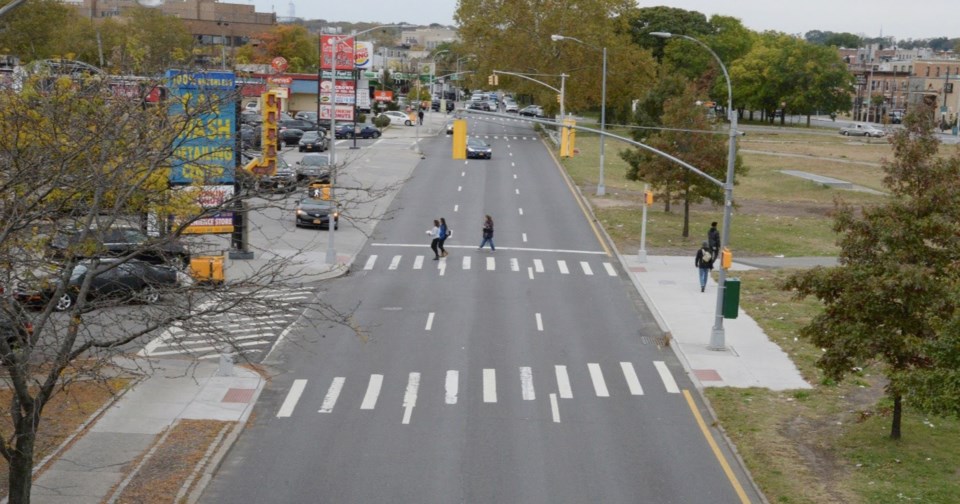The New York City Department of Transportation on Monday announced the launch of a new community-driven study to redesign Conduit Avenue in Brooklyn and Queens, a major, three-mile arterial street that connects Atlantic Avenue and Linden Boulevard in Brooklyn to the Belt Parkway and JFK Airport in Queens.
There have been more than 40 severe injuries and five traffic deaths in the past five years on the Conduit between Atlantic Avenue and Lefferts Boulevard, the DOT said through a press release. (Some portions of the artery is Conduit Avenue, while others are Conduit Boulevard.)
Heavy through-traffic and limited pedestrian infrastructure leaves community members with few options for safe travel along and across this stretch of roadway. Informal, unpaved pathways across the median show a desire for improved pedestrian access while speed cameras along Conduit Boulevard consistently log the highest number of speed violations of any locations citywide, suggesting a need for a redesign that reduces instances of reckless driving behavior.
To help address safety and pedestrian accessibility concerns, community members will have the opportunity to share ideas for the future of the roadway at workshops in neighborhoods along the corridor. Area residents can also share feedback on DOT’s feedback map of the corridor.
In-Person
Date: Tuesday, June 10, 2025
Time: 7:00pm - 8:30pm
Location: Robert H. Goddard JHS 202, 138-30 Lafayette St, Ozone Park, NY 11417
Virtual
Date: Thursday, June 12, 2025
Time: 7:00pm – 8:30pm
The workshop will be held as a Zoom meeting and will run from 7:00-8:30 PM.
"We want to hear what New Yorkers think the Conduit should look like, and how it should serve our communities," New York City Department of Transportation Commissioner Ydanis Rodriguez said. "It is time to let New Yorkers decide how the Conduit corridor can best serve the needs of the locals who use it most, while keeping them safe.”
From 1934 to 1940, the city widened Conduit Avenue, severing neighborhoods in Brooklyn and Queens as part of a broader vision to reimagine the outer boroughs for car travel, steam rolling working class neighborhoods in the process. The roadways were initially built to function as arterials alongside a larger elevated highway that would have been constructed in between them, but was never built.
The abandoned plans for an elevated highway left a large, unused median between the east and westbound Conduit that contributes to nearly 61 acres of open space along the corridor, roughly the size of 46 football fields, according to the DOT.




